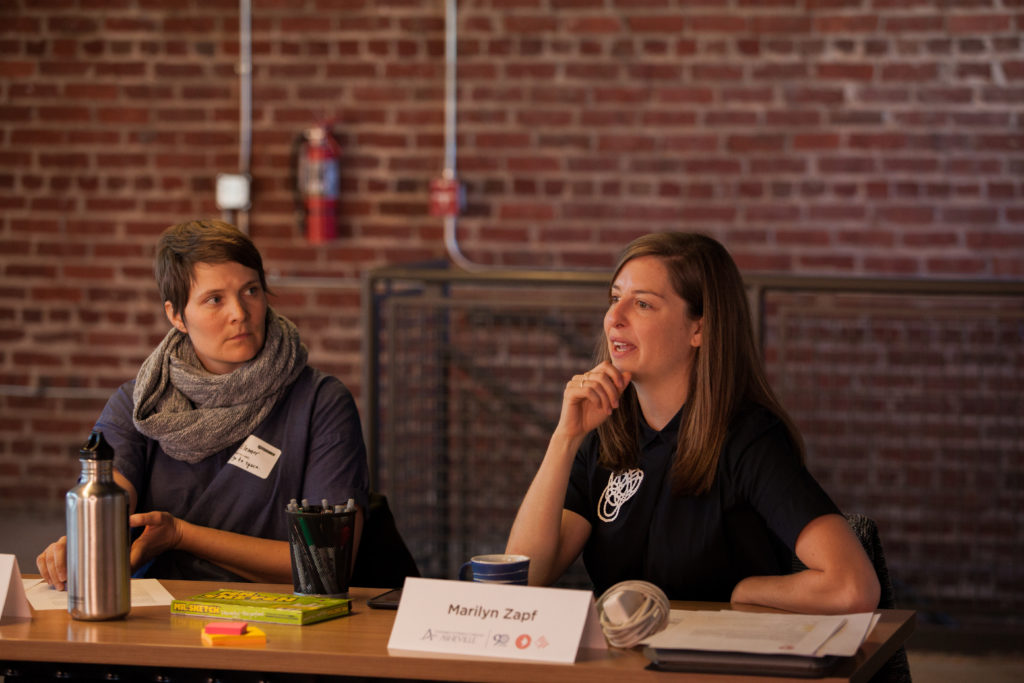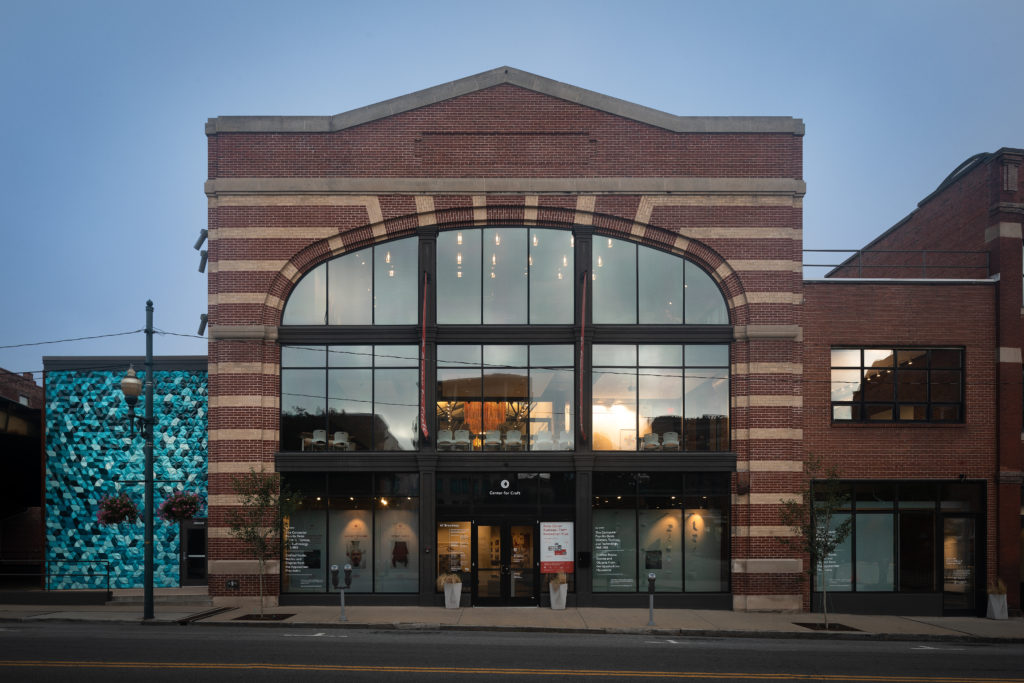Although “arts and crafts” are often lumped together, they are actually distinct forms of creativity with their own approaches and philosophies, but they can still be hard to define. Now celebrating its 25th year, Center for Craft in Asheville, NC often fields questions about how to define “craft.” The Center is a national 501c3 organization that advances the field of craft by fostering new ideas and backing the next generation of makers, curators, and scholars.
Executive Director Stephanie Moore acknowledges that distinguishing between “art” and “craft” can be tricky. “It’s probably the most frequent question we hear when people visit our space.” According to Moore, craft traditionally refers to the creation of objects made of natural materials, such as wood, glass, fiber, and metal. “It’s heavily based in process, so the objects created tend to be viewed as tangible manifestations of the process, which is often more important than the object itself,” she notes. “Craft is also used in a way that’s functional, or in a way that embeds memory. It’s a much older form of art than fine art.”
“Every human is exposed to creativity, whether it’s music, acting, dance, or craft. Because it has existed for so long, craft is actually essential to being human.”
Stephanie Moore, Executive Director
Center for Craft was established in 1996 as a public service entity of the University of North Carolina system and in so doing recognized craft as a vital part of the region. Craft’s rich heritage in the state dates as far back as the Cherokee to surfacing in movements like the Craft Revival that led to the establishment of the Southern Highland Craft Guild. In 2014, Center for Craft became an independent nonprofit.
Moore joined the organization in 2010, and shepherded the transition. She and her team essentially started from scratch. In 2019, the Center moved from 55 pastoral acres where they operated with an annual budget of $150,000 to a historic building in downtown Asheville that underwent an $11 million renovation led by Moore, her staff, and the board. Center for Craft now has a budget of $1.7 million overseen by nine full-time staff members, part-time staff, and 20 board members. They award grants, present exhibitions, deliver public programming, build strategic partnerships, and spearhead initiatives across the country. Plus, they own their building debt-free.
Since moving into the new building, the Center’s work has been organized under two main areas: field building and creative placekeeping. Whereas placemaking can sometimes support gentrification in the name of revitalization, placekeeping engages the people who live in a pre-established community, helping them to preserve cultural memories and to protect the things that make their home unique. That’s a primary purpose of Center for Craft’s downtown Asheville facility. A gallery features exhibitions by the organization’s grant recipients and serves as a space to engage and develop emerging curators. An educational area houses a lot of the Center’s research and scholarship. Moore sees the facility as “a physical manifestation of craft” and the opportunity to showcase what is happening in the national field of craft in downtown Asheville.

Since external programming and audiences have been greatly reduced during the pandemic, most of the organization’s efforts right now are centered on field building, especially in the form of grantmaking. Establishing a field for craft is critical, says Moore. “When a craft artist, say a ceramicist, goes to college in the U.S. to study their art form, they often find there is no history about ceramics. It wasn’t included in the art history canon.” The Center for Craft is changing that. They are supporting artists and scholars who are working to establish and formalize the field and its history, and to identify which histories are missing. The Craft Research Fund Artist Fellowship, Exhibition Grant, and Project Grant recently awarded $137,135 to eleven organizations, scholars, and makers in support of craft research, exhibitions, catalogs, and projects in the United States. The Windgate-Lamar Fellowship is known as the preeminent awards program for the next generation of craft artists by awarding ten undergraduate seniors with $15,000 each. A new program also provides artists with skill building as part of their grant awards in areas such as entrepreneurship, legal services, and marketing.

The organization is also focused on the future of craft. They seek to answer questions like “What are the emerging trends?” “How is craft changing?” “In what ways is it intersecting with and expanding into other areas?” And even, “Is there a role for technology in craft?” Moore says that despite the stereotype of being outdated, craft can actually assimilate into other areas of creativity a lot more easily than fine art can. “Craft can be craft beer. It can be your coffee mug. It can also be found on the floor of a major art fair in New York City.”
Throughout the past decade, Moore and her team have survived establishing a new financial model, undergoing an $11 million facility renovation, and a global pandemic. Despite these massive transitions — or perhaps because of them — they’re excited about preparing the Center for the future. They are currently in the midst of a strategic planning process facilitated by Creation In Common. She explains, “Now that we’re relatively stable, this is the right time to steward a collective group of people, our staff and board, towards a shared vision.”
Over the past 12 to 18 months, the organization did a lot of planning work, including establishing a Craft Think Tank that met virtually last July, guided by Creation In Common. But they needed some help synthesizing all of the various inputs. Moore says of Creation in Common, “They’re a lean team, but they are super well-versed at what they do. There is a level of expertise and specialization that they’re able to draw on from their network of people. I’m really enjoying being a part of the process, instead of having to facilitate it and not being able to contribute all of my institutional knowledge. That’s the one of the best parts about working with consultants.”
As she considers the future, Moore reflects on the importance of craft and its place in our culture and communities. She sees craft as a way of learning about the world and each other. She explains, “Every human is exposed to creativity, whether it’s music, acting, dance, or craft. Because it has existed for so long, craft is actually essential to being human. This is a very isolating time. Our communication and our pathways to human interaction are muffled. There’s a mental health crisis — a sort of undercurrent — happening. Craft is one solution to all of that. My wish is that people would embrace craft as a comfort and take pleasure in it. It’s a way of reminding us of our shared humanity.”
About Center for Craft
The Center for Craft is celebrating 25 years of advancing the field of craft through awarding grants, offering exhibitions and public programs, building strategic community and national partnerships, and spearheading initiatives in the United States. Founded in 1996, the Center is widely acknowledged as one of the most influential national 501c3 organizations working in the craft field today.


